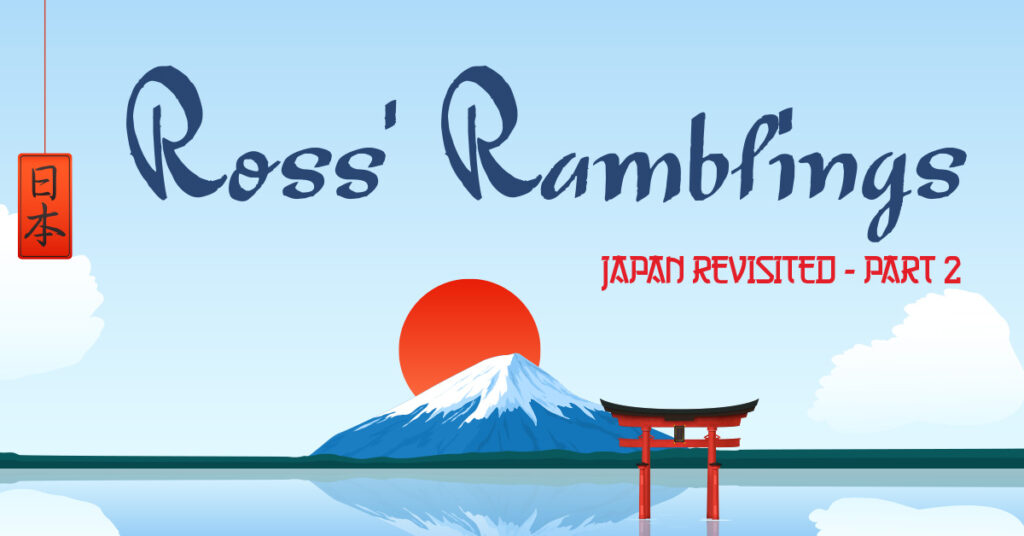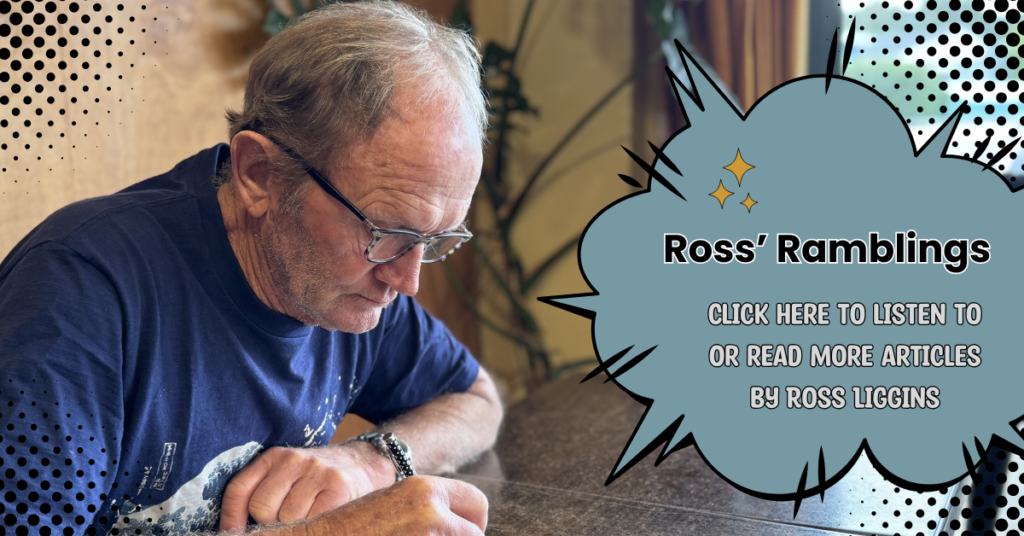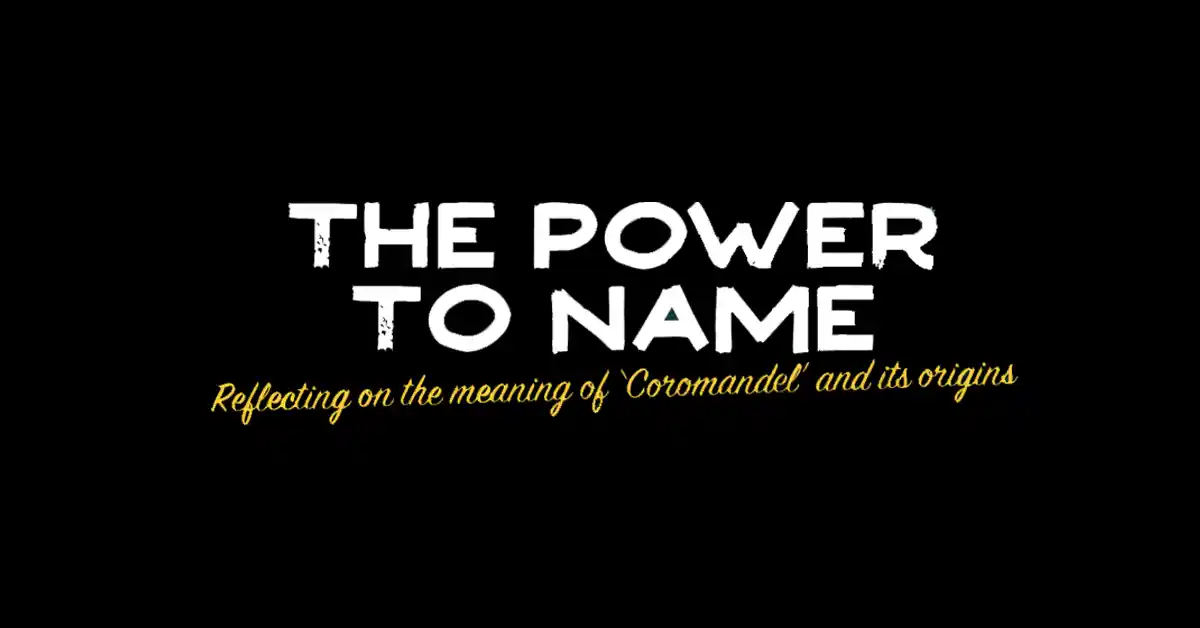
I have just returned from Japan after visiting my partner’s family. On arrival at Narita Airport at 9pm, we were met by Hiroshi, my partner’s brother, who said “We go to onsen (Japanese hot baths).” After flying for 12 hours, this was indeed a welcome treat and we basked in 40 degree pools of different depths, some shallow with stone pillows to gaze up at the planes taking off every few minutes from the airport a kilometre away, and some with pummelling jets of water that massaged away the aches from 12 cramped hours on Fiji Airlines.
No clothing is worn and the pools are separated for men and women. I don’t have any tattoos, which was fortunate, as there was a sign displaying body profiles with imaginary tattooed areas which said only tats that could be covered with the palm of one hand were allowed at that onsen. Many don’t allow any moko (tattoos) at all, but I think that with the increasing numbers of foreign visitors and young Japanese who return from overseas sporting some ink, attitudes could be slowly changing. I often wonder how the All Blacks manage when they visit onsens. Perhaps the ultra-polite and accommodating Japanese make exceptions for our national heroes, or maybe it’s just that the players have extra big hands.

It’s a land of public signs which elicit a chuckle like, ‘No leaning here’ or ‘No littering, I’ll tell the police’, or ‘Please chew well and eat slowly. Be careful not to suffocate’, while some shop names like a supermarket called ‘Foods and Drug’ and a girls’ fashion brand ‘Titty and Co’ also bring a smile.
It’s a land of temples and shrines, hundreds of years old, evidence of the Buddhist and Shinto religions which flourished in times gone by. The Kiyomizu-Dera temple that we visited in Kyoto was founded in the year 778 and rebuilt in 1633 from 400-year-old zelkova trees which will remain in good condition for twice the age of the wood used, i.e. 800 years, until the year 2433. It really makes the 50-year life span of our radiata pine houses seem a bit lame. More forests of zelkova were planted 25 years ago to be used in hundreds of years’ time to replace any decaying wood in the temple. The structure is held together with interlocking woodcuts and not one nail was used in the construction of its 15-metre-high foundations and sprawling temple complex.
There are similar temples all over Japan, most with exquisite wooden and bronze sculptures and painted frescos. Given the much lower population in times gone by, it makes us realise how important the words and practices of the Buddha must have been, and one wonders how a land with such a rich cultural and religious legacy can now have such a small fraction of the population that would label themselves as religious. Most Japanese observe the rituals of Buddhism and Shinto at temples and shrines and many houses contain a butsudan, a small shrine where deceased relatives are remembered and honoured, but few know of the four noble truths of Buddhism – the truths of suffering, the cause of suffering, the end of suffering and the path to the end of suffering. To them the antiquity of their culture and the accompanying rituals are what is important.

It’s also a land of speaking baths which tell you when the water is hot enough, and of wonderfully warm heated toilet seats with sensors which open the lid and squirt water into the bowl as a non-stick measure as you come through the door and which include a bidet, to wash and dry you know where. Unfortunately, all instructions are in unintelligible (for me) Japanese script so fortunately there is also the toilet paper option. Other technological wonders in the form of robots scour the department store aisles spurting out information in Japanese, and others will even serve you in restaurants.
Of course, no commentary about Japan is complete without mentioning the famous food. The supermarkets are full of seafood, meat, fruit and vegetables of every kind, often half the price of their New Zealand counterparts perhaps due to economies of scale and the low value of the Japanese yen. Various seaweeds and fermented pickles like daikon (super large radishes), burdock and bamboo shoots complement the taste of the delicious rice which is a part of most Japanese meals. Along with the usual western varieties, popular Japanese drinks include green tea, mugicha (barley tea), yakult and calpis (probiotic drinks). Japan also has its own alcoholic drinks like Nihonshu, sometimes called sake. It is a kind of rice wine. I would advise drinking a high quality variety as the cheap stuff can leave one with a headache not worth having the next morning. Shōchū is a popular hard liquor spirit made from a base of sweet potato, barley, rice or sugar cane. It has a high alcohol content so watch out! Japanese whisky has a very high reputation worldwide; umeshu, another often home-made alcoholic drink, is a kind of unfermented plum wine which is said to aid digestion, reduce inflammation in the body and dissolve calcium build-up in the blood. It’s nice to know that some alcoholic drinks may contribute towards good health. The prices of these made-in-Japan alcoholic drinks is determined by the quality, so you can become a drunk very cheaply if your only concern is the alcohol. Combine that with the very cheap tobacco products and a slow death by drinking and smoking won’t cost you very much.
The Japanese people are very generous, honest and accommodating. They will go out of their way to offer help where needed and if you lose something it will always be returned intact with nothing missing. They are also extremely hard working, resulting in a system in which everything works efficiently and on time, unlike in New Zealand. The motorways are smooth and straight, going through mountains not around them and if you are one minute late for your train or bus, you are likely to miss it. Of course, the trains are often super-crowded and I feel sorry when I see tired, often overworked salary men and OLs (office ladies) dozing their way home on a not uncommon 90-minute train journey. I can understand why many young Japanese are choosing a different lifestyle in foreign countries. I think we are lucky to have had a thriving Japanese community of residents and language students here in Whitianga for the past 30 years. I just hope one of them will one day open a typical Japanese eatery, where you can keep your own bottle of Nihonshu with your name on it on the shelf and order delicious Japanese cuisine – perhaps like the one in the excellent Netflix series ‘Midnight Diner’, a must watch for those who love things Japanese. Sayonara, mata ne! (Goodbye, catch you later!)
Words by Ross Liggins

Coromind: Coromandel’s Collaborative Magazine

Help us take Coromind Magazine to new heights by becoming a member. Click here
Change the Weather for Your Business: Advertise with Us.
Advertise your business in the whole Hauraki Coromandel in the coolest Coromandel Art Magazine, from Waihi Beach/Paeroa /Thames up to the Great Barrier Island.
Advertise Smarter, Not Harder: Get in Touch






